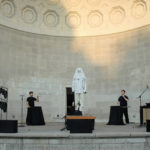Stephen Vessels continues his series on rare examples of underappreciated classical music composers from around the world. Felix Draeseke of Germany, once dubbed a “giant” by Franz Liszt, fell into obscurity until only recently.


On Felix Draeseke, By Stephen Vessels
Felix August Bernhard Draeseke, 1835 – 1913, German composer of eight operas, four symphonies, six symphonic poems, preludes and overtures, three concertos, three string quartets, and a long list of other orchestral, chamber, choral, vocal and solo piano works. From the age of fifteen he lived a life entirely devoted to music. He was championed by Franz Liszt, with whom he had a long and close friendship, much admired the work of Richard Wagner, and eventually became associated with the New German School of composers.

Watch this video on YouTube
Felix Draeseke – Symphony No.1 in G-major, Op.12 (1872)
Though his music was popular, he was not able to earn a stable income from it until he was nearly fifty, and supported himself mainly from private students. Like Beethoven, he suffered hearing loss throughout his adult life, after contracting an ear infection at the age of eighteen. He was almost entirely deaf when he composed his fourth symphony, his last orchestral work. He lived a rather solitary existence, and did not marry until he was fifty-eight. One of the most revered composers of his time, his work fell into obscurity during the mid 20th century. He died of a stroke on February 26th, 1913, nearly a year to the day before the advent of World War I.

Watch this video on YouTube
Felix Draeseke – Symphony No.3 in C-major, Op.40 “Symphonia Tragica” (1886)
Series Curated By Stephen Vessels














Pingback: Gershwin’s Reluctant Kaleidoscope of America in ‘Rhapsody in Blue’